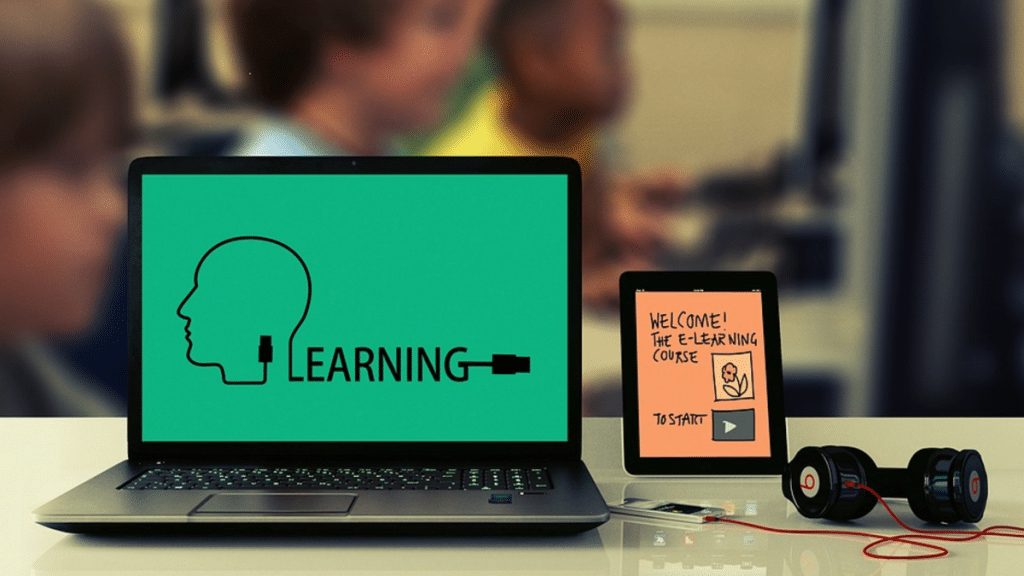The concept of education has changed over time. Traditionally, being physically present in the classroom was the only way people could gain education. With the rise of new technologies, people have become more prone to seeking education in the comfort of their homes. You can have access to quality education as long as you have a computing device and internet connection. Online education has become a sensible choice whether you are an adult or a child.
But first…
What is E-Learning?
E-learning or electronic learning is the availability of learning and training through digital resources. This type of formalized learning is delivered through electronic devices like computers, smartphones, and tablets which are connected to the internet. E-learning is very impactful today due to its convenience. Users may now easily learn whenever and wherever they want with little to no limitations. Whether you are an expert or a beginner, online learning has skyrocketed over the past decades for everyone. From schools to offices, e-learning has numerous benefits. For organizations, e-learning offers an affordable and time-saving method of training employees. In education systems like schools and universities, people have started using e-learning to even get their master’s degree from the comfort of their computer screens.
How Did E-learning Come Into Place?
The concept of e-learning came into place in 1999 by Elliot Maisie, marking the first time this term was used professionally. But in recent years the concept took a boost as more and more preferences of people turned towards remote services. The electronic learning concept gained the most popularity due to COVID-19. Schools were closed and organizations expected employees to work from home. Thus, to continue with learning online approaches were adopted. Schools offered distance learning to students and organizations offered online training programs to employees. This led people to believe that e-learning is an efficient approach and can bring transformation to the education system.
Distance Learning Methods:
Any form of remote learning in which the learner is not physically present in the classroom is referred to as distance learning. To continue with the effective delivery of knowledge through distance learning, educational institutions use ITSM solutions, which keep track of all the IT infrastructure and facilitate online learning platforms.
There are two types of distance learning methods:
· Synchronous learning
· Asynchronous learning
A student can be anywhere at any time when they are learning. Distance learning can either be synchronous or asynchronous. Learning at one’s own pace and on a set schedule is known as asynchronous learning, whereas studying from a distance through virtual attendance at a class on a regular basis is known as synchronous learning. Synchronous learners attend online classes face-to-face with the virtually gathered classroom. Fellow students and teachers can interact with one another and the class has a pace of learning that everybody has to adhere to. For asynchronous learners, no such conditions apply. They study independently at their own pace. Their learning method does not involve video calls or real-time interactions.
Benefits of E-learning: Why is Online Learning Becoming the Future of Education?
There are undoubtedly numerous benefits of e-learning, let’s discuss the top 5 below:
1. Flexibility:
Both teachers and students have the flexibility to set their own schedules for teaching and learning. E-learning appeals to students desiring to learn at their own pace, while teachers enjoy the convenience of planning lessons that fit everyone’s schedules. Consequently, online education platforms have made it feasible to seamlessly blend work and study. Individuals achieve a balanced work-study life through the time management skills acquired from online learning. Moreover, a mutual calendar between instructor and student fosters increased responsibility and independence for both parties.
2. Availability of a Range of Online Programs:
The internet hosts a myriad of courses and programs aimed at fostering learning across various fields. An increasing number of colleges and higher education institutions are now offering online versions of these programs, catering to a diverse range of levels and disciplines. From quantum physics to music creation, the spectrum of opportunities is vast, accessible to all types of learners. Online or virtual study presents a prime opportunity to earn official certificates, diplomas, or degrees without the necessity of physically attending a university campus. Nowadays, individuals can acquire certifications that significantly boost their professional prospects.
3. It’s Accessible Anywhere:
The biggest benefit of online learning is that you can study from anywhere in the world through learning management systems. All you need is a computer and internet connection and you can study anything. There is no cost of commuting or strictness on following a schedule. If you are in a study program and wish to travel abroad for work, you will not have to opt for one. You can benefit by doing both.
4. Customized Learning Experience:
Not only is e-learning flexible in terms of pace but each individual can have their own requirements and learning capability. Luckily, online classes are smaller than conventional classrooms. Each learner has greater interaction with the tutor and receives more feedback.
5. Cost Effective:
Online methods are quite affordable considering the zero cost for commuting and class materials. There are a number of payment methods that let students pay on installment basis too. Many students also get discounts and scholarships which cuts the cost.
Conclusion
There is no doubt that e-learning is taking over the world day by day considering its numerous benefits. Students consider online learning to be a better or same experience than a traditional classroom. Thus, people assess their unique situations and opt for online courses. International students can also educate themselves from anywhere in the world.
